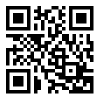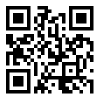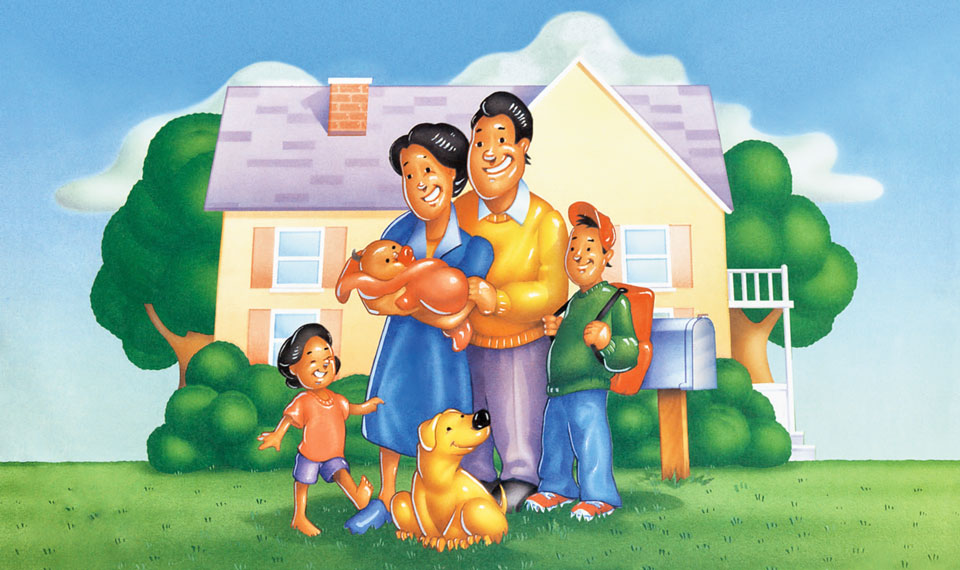
Home is a place where the child finds love, care, comfort and feels safe. But it is also a place where kids can hurt themselves. No matter how much you try to keep your buttercup wrapped in cotton wool, you can’t avoid those minor scrapes and bruises that come along with the journey of growing up.
Often, we overlook the factors that may result in serious accidents and injuries to kids. Thus, proper safety measures and adequate childproofing steps are a mandate to make your home a more secure place for your little one. And even when you think you have done a meticulous job of toddler-proofing, chances are that you have missed out on something.
So, ponder, is your home is a safe place for your kid?
Well, below is a list of common injuries that you need to pay special attention to when you childproof your home:
1) Falls
Every time your toddler tumbles over the bed, couch, high chair, or the crib, your heart skips a beat, doesn’t it? Did you know more than one-third of the injuries in infants and toddlers occur due to falling at home? Slippery floors in bathrooms, the uncovered toilet seat, slippery doormats, unguarded windows, balconies, staircases are a few places that pose serious threats to your kid.
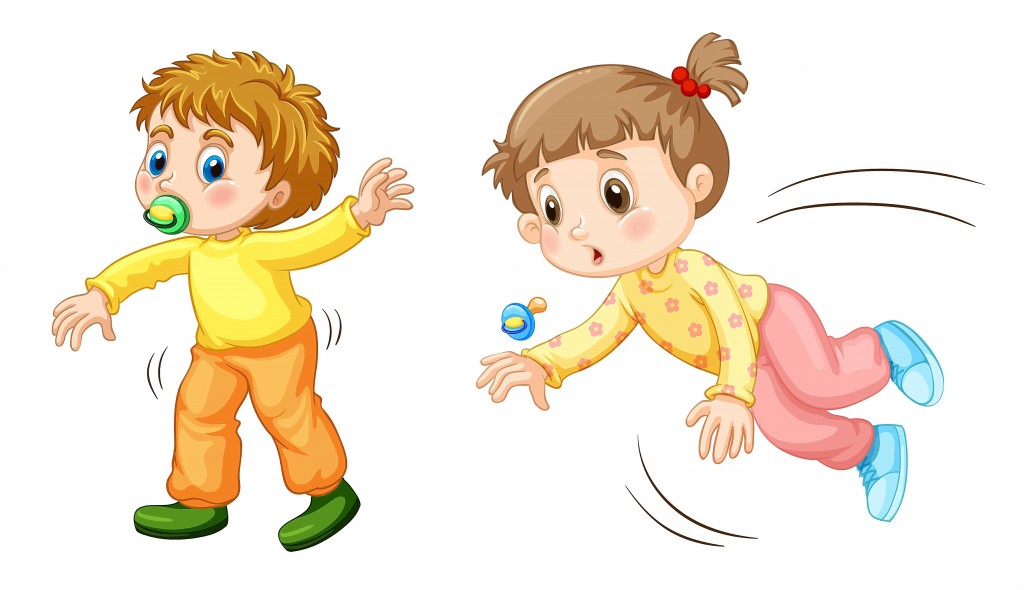
What should you do?
- Do not leave your kid alone on the bed, either when she is asleep or when awake. If at all you have some urgent work to be done when your kid is asleep, make sure that you constantly keep an eye on her while doing it.
- Always make it a point to put your baby back in her crib once she is asleep. If you don’t have a baby crib, put pillows on the sides of the bed which can guard the kid against falling off.
- Keep the bathroom floor dry to avoid slipping and possibility of serious injuries.
- Use baby potty for your little one or buy a toilet seat for toddlers to avoid injuries while using the commodes.
- Use door mats that don’t slide away easily. Preferably opt for doormats that have suction effect at their bases and resist movement.
- Make sure the windows, balconies, gates and stairs are properly guarded.
- Keep away any furniture which is close to an unguarded window.
2) Drowning
Bathing is always fun for the kids. Be it in the bucket, bathtubs, sink, or swimming pools, kids love playing and splashing around in the water. But did you know those small kids can drown even in one inch of water in a small bucket? The open toilet seat is also very dangerous, into which a curious kid can easily fall headfirst and get drowned.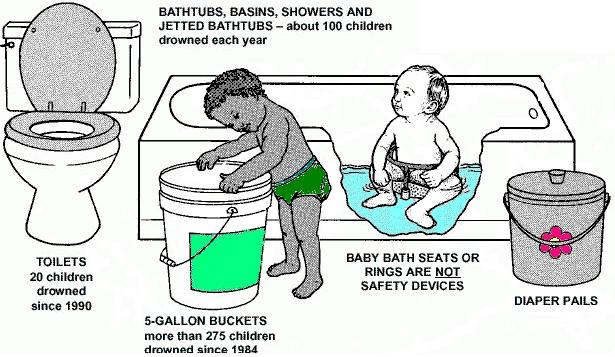
What should you do?
- Do not leave the child unattended near water, not even for a few seconds.
- Close the toilet lid to avoid any kind of accidents.
- Remove auto-locks if any from the bathroom doors.
- If you have to attend the doorbell or a phone call while bathing your child, wrap her in a towel and carry her with you.
3) Burns
Whether because of an accidental tipping of the coffee mug or due to the wrong temperature of the bathing water, burns and scalds are very common household injuries that are seen in toddlers. Appliances like iron boxes, curlers, and hair dryers can cause serious burns if left unattended.
What should you do?
- Keep the coffee mugs away from the reach of your little one and if it’s on the table, make sure that there are no tablecloth edges hanging
 from the sides. Toddlers tend to reach out to any low hanging cloth edges while they are trying to stand on their own.
from the sides. Toddlers tend to reach out to any low hanging cloth edges while they are trying to stand on their own. - Check the temperature of the water with your elbow before bathing her.
- Use safety tip caps to prevent children from turning on the hot taps.
- Switch off appliances like the iron box, curlers, straighteners etc and store them at a safer place if they need cooling down.
- If you are using a microwave oven for heating your baby’s food, check the temperature of the food once by tasting it before feeding your kid. Be extra vigilant in the case of solid food like potatoes etc, which tends to be hotter at the center and can cause scalding.

- Turn the handles of pots, pans, and cookers etc. towards the back of the stove, so that they are out of reach of the kid.
- Keep appliances like stove, oven, grinder, etc, at a level where your toddler can’t reach out easily.
- Do not carry or hold your child while using the stove. Instead, pull a chair and make her sit on it so that she is safe.
- Make sure you turn off the gas when you answer the door or a phone call.
4) Choking:
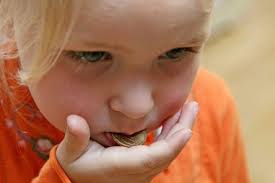 Choking usually happens when an object gets into the air pipe and blocks the air passage leading to a lack of oxygen and even death, if not attended to immediately. Toys, batteries, coins, finger rings, pen caps, chocolates, popcorn, fruits like grapes, nuts and dry fruits etc also can cause serious choking problems.
Choking usually happens when an object gets into the air pipe and blocks the air passage leading to a lack of oxygen and even death, if not attended to immediately. Toys, batteries, coins, finger rings, pen caps, chocolates, popcorn, fruits like grapes, nuts and dry fruits etc also can cause serious choking problems.
What should you do?
- Before you settle for the perfect baby toy, check the right size to prevent choking hazards.
- Button batteries are very common these days and are found in many common household items like remote controls, hearing aids, toys etc. Make sure that you keep them away from your child.
- When your toddler starts eating solid food, take care that the size of the pieces are not too big and are well cooked for easy munching.
- Keep your wallet and cosmetic products away from their reach.
5) Poisoning
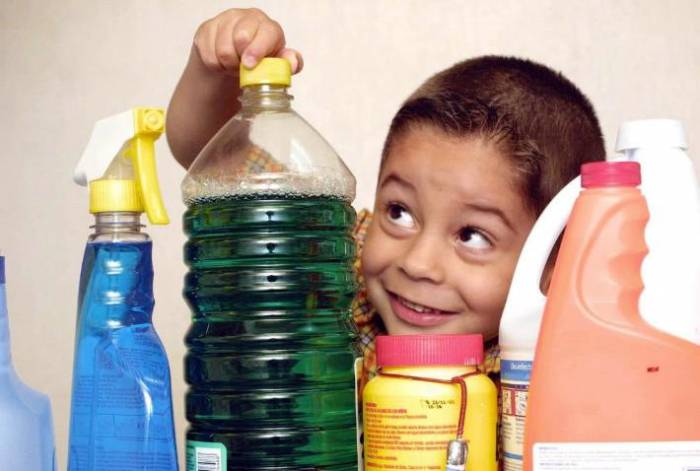 Poisoning happens when the kid accidentally gets exposed to or accidentally ingests medicines and chemicals such as cleaning agents, dyes, insect killing sprays, cosmetic products etc.
Poisoning happens when the kid accidentally gets exposed to or accidentally ingests medicines and chemicals such as cleaning agents, dyes, insect killing sprays, cosmetic products etc.
What should you do?
- Keep medicines and the first aid box out of the reach of kids.
- Store all cleaning agents such as phenol’s, dishwasher solutions and sprays etc in a closed cabinet. Always keep them in their original container so that they are not mistaken as food by kids in case they find it.
- Adhesives and glues can also be very dangerous and should also be kept away.
6) Suffocation and Strangulation
Have you ever heard of SIDS? Sudden Infant Death Syndrome, also known as cot death or crib death, occurs due to many reasons and suffocation is one of them.
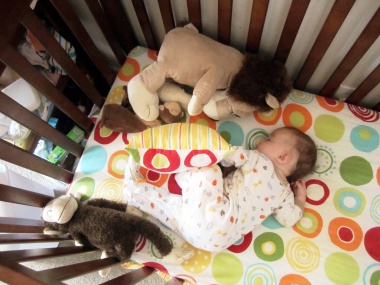 What should you do?
What should you do?
- If your kid sleeps in the bed with you, make sure that the mattress is a firm one with a tight fitting bed sheet.
- Always lay your baby on her back to prevent any kind of suffocation.
- Also, remember to put your baby back in her crib when you are ready to sleep.
- That soft toy may look very cute in the baby crib, but take it out when you put your baby to sleep.
- In the case of mosquito nets, make sure that they are neatly tucked in and are away from the reach of your baby. Failing to do so may lead to strangulation and suffocation.
- Also, cover all electrical wires or curtain wires to avoid strangulation.
7) Other Safety Features Good to have
- Use a door barrier to prevent your kid from entering the kitchen.
- Door stoppers are a must. Also, rubber stoppers can be used to prevent the doors from completely closing.
- Use of stoppers in drawers will prevent kids’ fingers from getting trapped while closing drawers.This will also reduce the chances of injury that happens when the drawer is completely pulled out.
- Put a catch at the fridge door which will also prevent accidents.
- Use stove knob covers to make it difficult for the child to turn on the stove.
- Keep all sharp objects such as knives, forks etc. out of your child’s reach.
- Furniture that has sharp edges should be covered or removed and decorative items made of glass or ceramic should be kept away.
- Put plastic socket covers in all electrical plug points and switchboards that are accessible to the kid.
- Baby’s Eye View: Get down on your hands and knees and see how things look from down there. Check for all the places that your baby can access while crawling and what are the possible things that would lead to an injury.
Checklist For Yourself
- Keep all the emergency contact numbers at your reach. In the case of an emergency where you are not home, your teenage kid or the babysitter should have all the information available. The best way to do this will be paste sticky notes on the refrigerator with important contact numbers, house addresses, and emergency numbers.
- Always keep a spare key of your house with your trusted neighbors so that you or they can open the door at the time of any crisis.
Dr. Monica Parakh is a certified pediatrician trained at KEM hospital and Wadia Children’s hospital. She has also received subspeciality training in Pediatric cardiology at Narayana Health. She has several publications and editorials in national and international peer reviewed journals. She is an avid healthcare educator and believes that patient-powered care is the future of healthcare.

